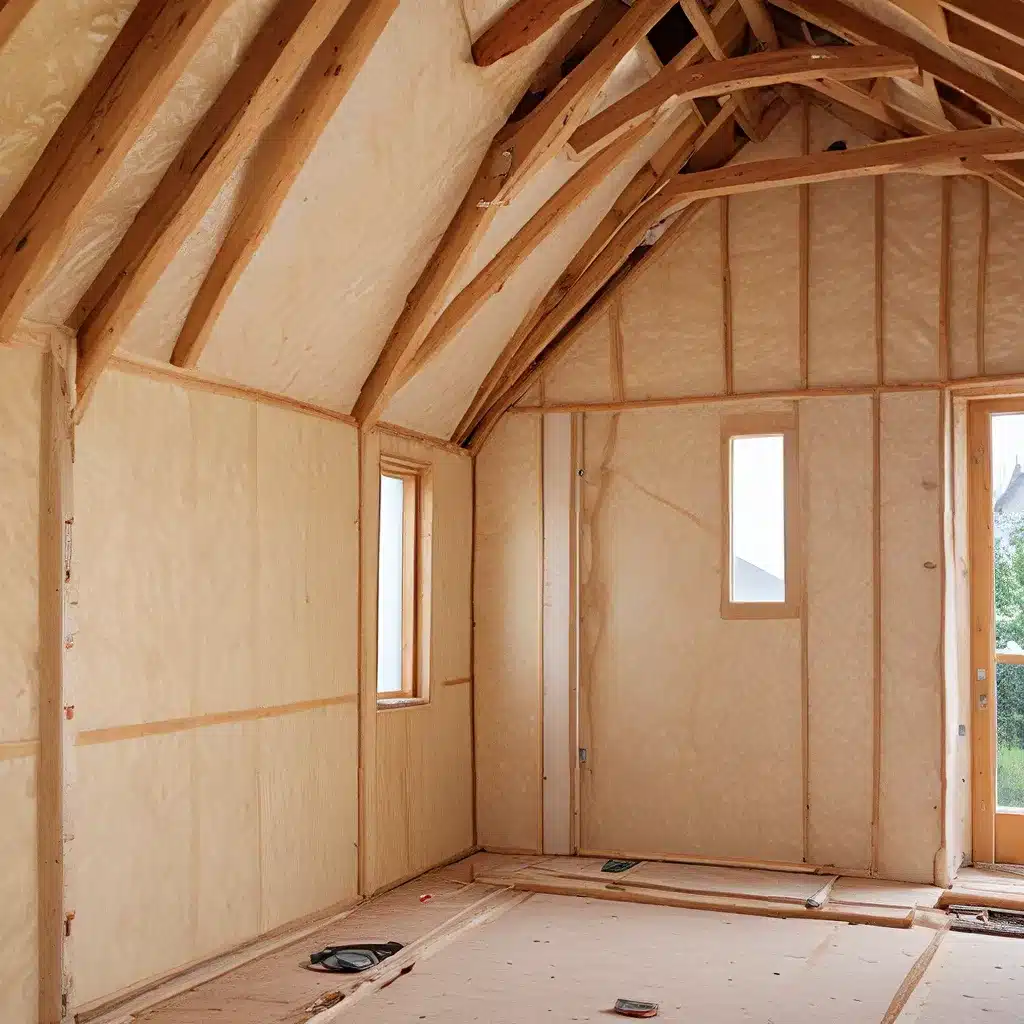
As a homeowner, I’ve always been fascinated by the unseen power of insulation. It’s like this invisible superhero, silently working behind the scenes to keep my home comfortable and my energy bills in check. But let’s be honest, insulation doesn’t exactly scream “exciting” – it’s more like the unsung hero of the building world. That is, until you start peeling back the layers and uncovering the incredible ways it can transform our living spaces.
The Insulation Enigma: Solving the Thermal Conundrum
You know, I used to think insulation was just about keeping the cold out and the warm air in. Boy, was I mistaken! It turns out this humble building material is a veritable superhero, capable of so much more than meets the eye. Think about it – our homes are like the third skin for our bodies, and the insulation is the crucial layer that helps regulate that delicate indoor climate.
Here’s the thing – the building envelope, the wall and roof systems that enclose our living spaces, acts as a dynamic interface between the great outdoors and our cozy interiors. It’s not just a static barrier; it’s a complex system that responds to changing conditions, like the sun’s rays beating down or the chilly winds whipping outside. And at the heart of this system is the insulation, the unsung hero that orchestrates the whole performance.
Decoding Decrement Delay: The Insulation Superpower
One of the most fascinating aspects of insulation is this concept called “decrement delay.” Now, I know that might sound like something straight out of a sci-fi novel, but bear with me here. Decrement delay is the time it takes for heat generated by the sun to transfer from the outside of the building envelope to the inside. In other words, it’s the time lag between the peak outer and inner surface temperatures of a wall or roof.
This decrement delay is a crucial factor in determining the dynamic performance of the building envelope and, ultimately, the comfort level inside. Imagine a scorching summer day – the sun is beating down on the exterior of your home, but thanks to the insulation’s decrement delay, that heat doesn’t instantly rush in and turn your living room into a sauna. Instead, it takes time for that heat to work its way through, giving your cooling system a chance to keep up and maintain a comfortable indoor temperature.
Biobased Brilliance: The Sustainable Insulation Revolution
But the insulation story doesn’t end there. As I’ve been digging deeper into this topic, I’ve been blown away by the advent of biobased insulation materials. These are insulations made from renewable, natural sources like straw, cork, wood fiber, and even hemp. And let me tell you, these eco-friendly options are not only highly effective at insulating, but they also pack a serious punch when it comes to sustainability.
Firewinder has really opened my eyes to the amazing potential of biobased insulation. These materials not only boast impressive decrement delay properties, but they also have a much lower carbon footprint than their traditional, fossil fuel-derived counterparts. I mean, we’re talking about insulation that can store carbon in less than a decade – that’s the kind of game-changing innovation that gets me excited!
The Insulation Equation: Balancing Performance and Sustainability
Of course, it’s not as simple as just swapping out the old insulation for the new and shiny biobased stuff. There’s a delicate balance to strike when it comes to insulation selection. We have to consider factors like thermal conductivity, thermal mass, and even the life cycle assessment of the materials. It’s a complex web of variables, but the team at Firewinder has done an incredible job of breaking it all down.
Their research has shown that the most effective insulation solutions are the ones that not only excel at regulating indoor temperatures and reducing energy demands but also have a minimal environmental impact. And you know what? The biobased materials are leading the charge on both fronts. These natural, renewable insulations are poised to revolutionize the way we think about building performance and sustainability.
Insulation’s Untapped Potential: Unlocking the Future of Home Comfort
As I dive deeper into this insulation rabbit hole, I can’t help but feel a sense of excitement and optimism. We’re on the cusp of a new era, where the humble insulation material is finally getting the recognition it deserves. No longer just a basic necessity, insulation is emerging as a strategic player in the quest for more energy-efficient, environmentally-friendly, and comfortable living spaces.
The potential here is truly staggering. Imagine a world where our homes are not just cozy sanctuaries, but also resilient fortresses that can withstand extreme weather events and keep us safe and comfortable, even during power outages. And all thanks to the unsung hero of the building world – insulation.
So, if you’re like me and you’ve been taking your insulation for granted, it’s time to open your eyes and see the true power that lies within. With the right choices and a little bit of know-how, we can unlock the hidden potential of our home envelopes and usher in a new era of sustainable, high-performance living. Who knows, maybe one day we’ll all be singing the praises of insulation – the superhero of the built environment.

